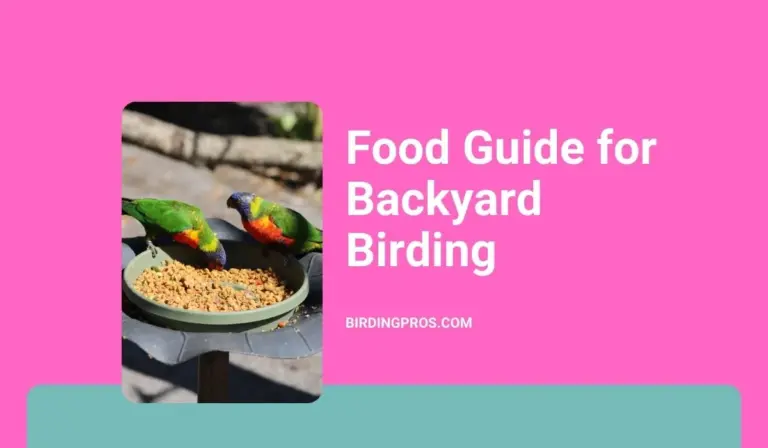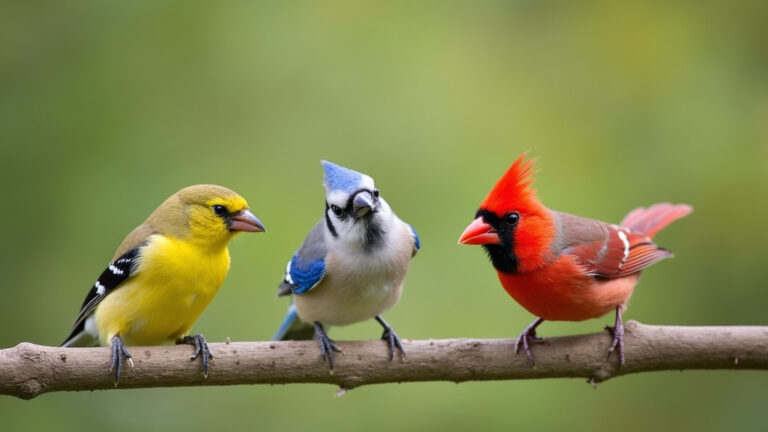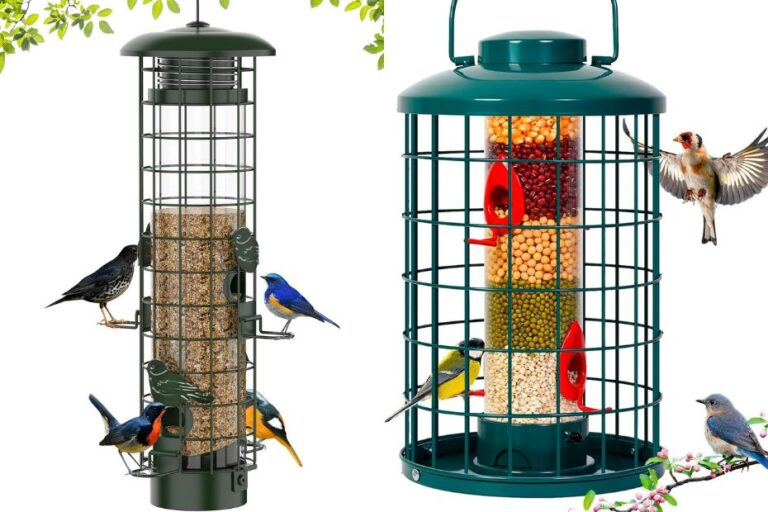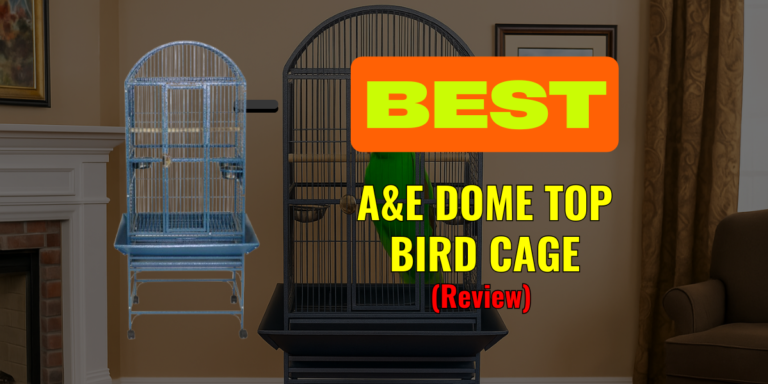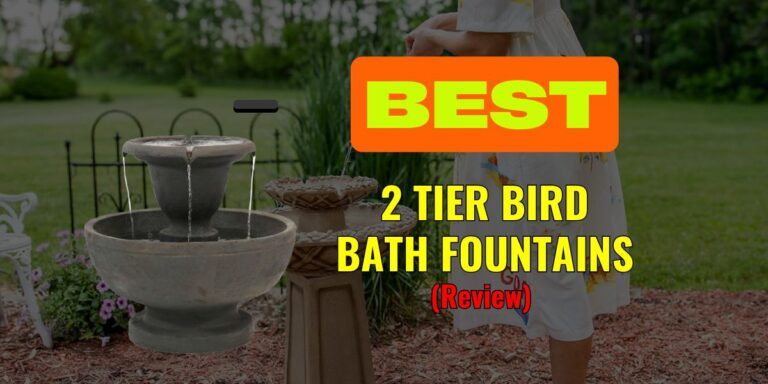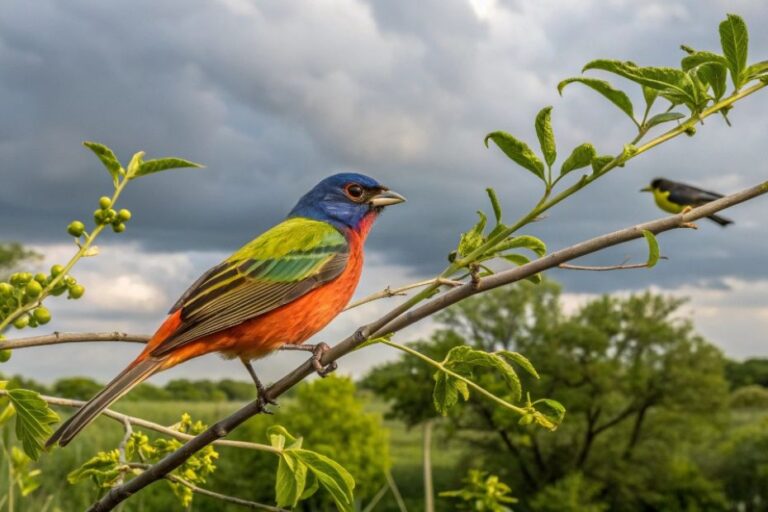Attracting Songbirds To Your Backyard: 6 Special Idea
Learn how to attract songbirds to your backyard with tips on providing food, water, shelter, and the right plants. Create a vibrant, bird-friendly environment that invites a variety of songbirds to visit and stay.
Table of Contents
Common Backyard Songbirds You Might Find
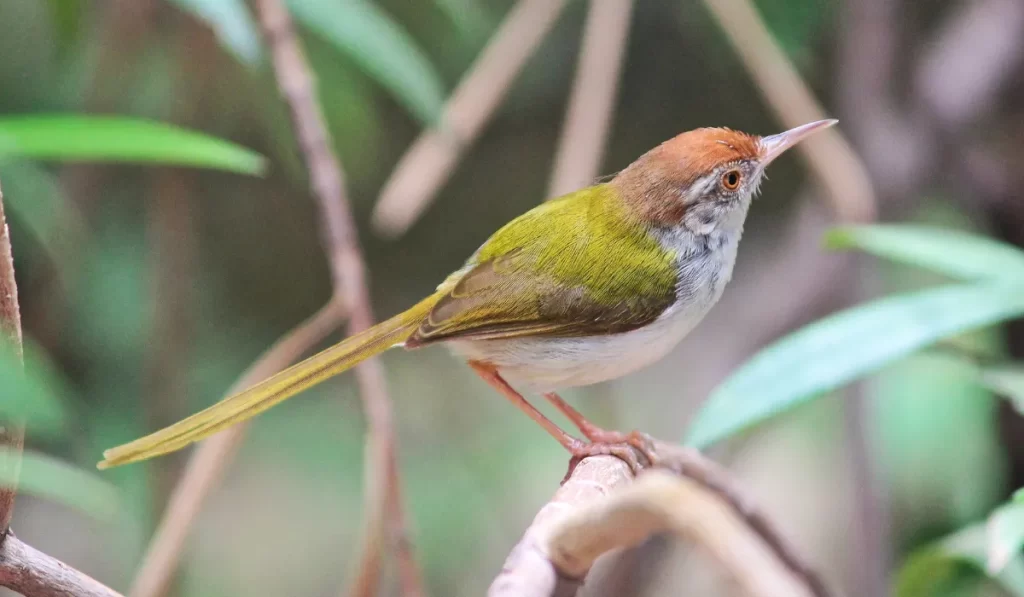
Attracting songbirds to your backyard can bring delightful sights and sounds. Here are some of the most common songbirds you might see, each with unique characteristics and behaviors that make them special.
American Robin
The American Robin is known for its bright orange-red breast and cheerful song. They are often seen hopping on lawns searching for worms.
Northern Cardinal
Northern Cardinals are easily recognizable by their vibrant red color in males and their distinctive crest. Females are a more subdued brown with reddish accents.
Blue Jay
Blue Jays are striking with their bright blue feathers and loud, varied calls. They are intelligent birds known for their complex social behaviors.
House Finch
House Finches have a pleasant, warbling song. Males typically have a red head, throat, and chest, while females are brown and streaked.
American Goldfinch
American Goldfinches are bright yellow in the summer and olive-brown in the winter. They have a cheerful, undulating flight pattern and a sweet song.
Mourning Dove
Mourning Doves are known for their soft, woeful cooing. They have a slender, tan body with a long, pointed tail.
Black-capped Chickadee
Black-capped Chickadees are small, with a distinctive black cap and bib. They are curious and friendly, often seen flitting about in search of food.
Eastern Bluebird
Eastern Bluebirds are small thrushes with a vivid blue back and a rusty red chest. Their soft, melodious song is a delightful addition to any backyard.
Song Sparrow
Song Sparrows are brown with streaked markings and a spot in the center of their chest. Their song is a series of varied, melodious notes.
Downy Woodpecker
Downy Woodpeckers are small black-and-white woodpeckers with a red patch on the back of their head. They have a sharp, rattling call.
These songbirds are commonly seen in backyards across North America and can be attracted with the right mix of food, water, and habitat.
Backyard Songbird Guide
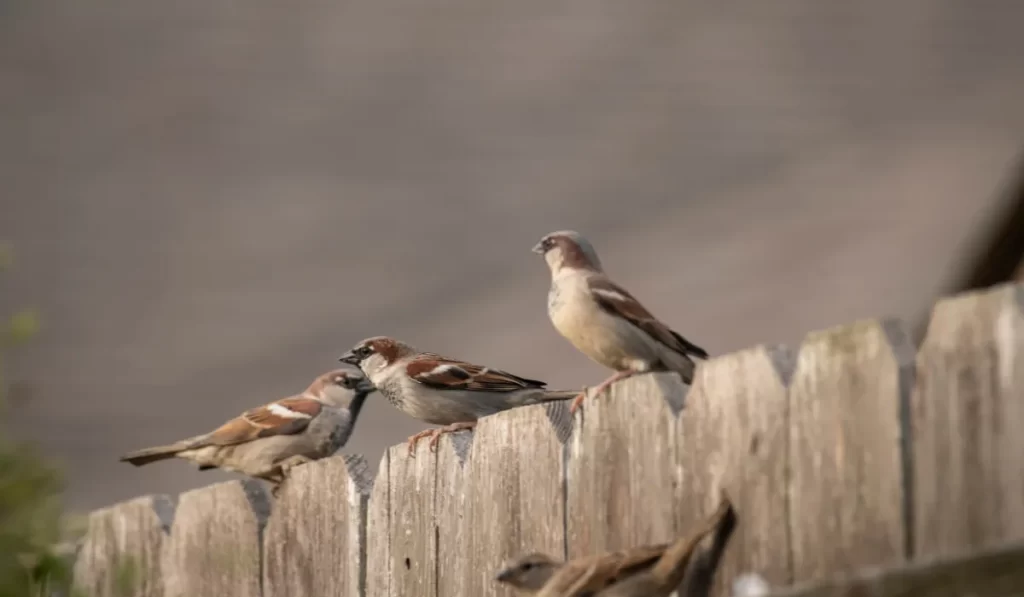
By following these guidelines, you can create a welcoming and supportive environment for songbirds in your backyard. Providing a variety of food sources, fresh water, safe shelter, and natural nesting sites will attract a diverse array of songbirds and enhance your outdoor space.
Variety: Offer a range of food sources to cater to different dietary preferences. Seeds such as sunflower, millet, and nyjer are popular choices. Suet is another excellent option, especially in colder months, as it provides high-energy fat. Including fruits and nectar can attract even more variety.
Birdhouses: Installing birdhouses or nesting boxes can encourage birds to raise their young in your backyard. Choose birdhouses that cater to the specific needs of different species, paying attention to the size of the entrance hole and the overall dimensions of the house. Ensure that birdhouses are mounted at appropriate heights and are securely attached to avoid disturbance.
Predator Guards: Use baffles, squirrel guards, and other deterrents to protect feeders and birdhouses from cats, squirrels, and other predators. Installing these guards can help keep songbirds safe while they feed and nest in your backyard.
Read More: How To Keep Hawks Away from Your Yard
6 Idea: Creating a Songbird Haven in Your Backyard
Creating a haven for songbirds in your backyard is a rewarding way to enjoy the beauty and melody of these delightful creatures. By providing the right environment and resources, you can attract a variety of songbirds to your outdoor space.
The Joy of Welcoming Songbirds
Welcoming songbirds into your backyard brings joy and serenity. Their vibrant colors and cheerful songs add life and movement to your garden, creating a peaceful and lively atmosphere.
Observing these feathered friends can also be a wonderful way to connect with nature and enjoy some quiet time.
Why Native Plants Matter
Incorporating native plants into your garden is crucial for attracting songbirds. Native plants provide the appropriate food and shelter that local bird species need.
They also support insects and other wildlife that are essential parts of a songbird’s diet. Native plants are adapted to your local climate and soil, making them easier to grow and maintain.
Providing Essential Elements for Songbirds
To attract and support songbirds, it’s important to provide the basic elements they need to thrive: water, shelter, and food.
Water and Shelter: A Bird’s Basic Needs
Songbirds need fresh water for drinking and bathing. Providing a birdbath or a small pond can help meet this need.
Additionally, shelter is crucial for protection from predators and harsh weather. Dense shrubs, trees, and man-made structures like birdhouses offer safe resting places.
Varied Foods: Seeds, Nectar, and More
Different species of songbirds have varied dietary preferences. Offering a range of foods such as seeds, suet, fruit, and nectar will attract a diverse group of birds.
Black-oil sunflower seeds, millet, and nyjer seeds are favorites among many songbirds. Providing a variety of food sources ensures that your backyard is a welcoming place for different species throughout the year.
Adding Color and Fragrance to Attract Songbirds
Plants with vibrant colors and pleasant fragrances not only enhance the beauty of your garden but also attract songbirds.
Aromatic Plants: Delight for Birds and Humans
Aromatic plants like lavender, mint, and jasmine can attract birds while adding a delightful scent to your garden. These plants often attract insects, which are a food source for many songbirds.
Colorful Flowers: Nature’s Invitation
Brightly colored flowers such as sunflowers, coneflowers, and zinnias are attractive to songbirds. These plants provide nectar and seeds, making them excellent choices for a bird-friendly garden. Their colors signal to birds that food is available, drawing them into your backyard.
Choosing the Right Feeders and Placement
Selecting the appropriate feeders and placing them correctly can make a significant difference in attracting songbirds.
Different Feeder Types: Variety Matters
There are various types of feeders designed for different bird species. Tube feeders, hopper feeders, platform feeders, and suet feeders each cater to specific birds.
Offering a variety of feeder types ensures that you accommodate the diverse feeding habits of songbirds.
Safe Feeder Locations: Protecting Birds
Place feeders in locations that provide safety from predators and easy access for birds. Position them near trees or shrubs where birds can quickly retreat if threatened. Avoid placing feeders too close to windows to reduce the risk of collisions.
Natural Shelters and Nesting Sites
Creating natural shelters and nesting sites in your backyard helps songbirds feel secure and encourages them to stay longer.
Dense Shrubs and Hedges: Protective Cover
Dense shrubs and hedges provide excellent cover for birds. Plants like holly, privet, and viburnum offer protection from predators and harsh weather conditions. These plants also offer nesting sites for birds.
Brush Piles and Fallen Logs: Natural Hideaways
Brush piles and fallen logs can serve as natural shelters and foraging sites. These elements mimic a bird’s natural habitat and offer places to hide, rest, and find insects.
Installing Birdhouses and Nesting Boxes
Birdhouses and nesting boxes can attract birds looking for a place to raise their young.
Species-Specific Designs: Tailored Homes
Different bird species have specific nesting requirements. Providing birdhouses that cater to the needs of species like bluebirds, chickadees, and wrens can encourage these birds to nest in your yard.
Ensure that the entrance hole size and overall dimensions match the preferences of the targeted species.
Proper Placement: Height and Orientation
Place birdhouses and nesting boxes at appropriate heights and orientations. Most songbirds prefer nest boxes mounted at least 5-10 feet off the ground.
Position the entrance away from prevailing winds and ensure the box is securely attached to avoid disturbance.
Keeping Water Clean and Accessible
Maintaining clean and accessible water sources is vital for the health and well-being of songbirds.
Birdbaths: Splashing and Sipping
A shallow birdbath with a gentle slope allows birds to drink and bathe comfortably. Adding a dripper or fountain can keep the water fresh and attract more birds with the sound of moving water.
Regular Maintenance: Fresh Water Always
Regularly clean and refill birdbaths to prevent the growth of algae and the spread of disease. Using a stiff brush and mild bleach solution can help keep the birdbath sanitary.
Ensure that fresh water is always available, especially during hot weather and freezing conditions.
By following these guidelines, you can create a welcoming and supportive environment for songbirds in your backyard, enhancing both your enjoyment and the birds’ well-being.
FAQs About Attracting Songbirds To Your Backyard
1. What types of food should I offer to attract songbirds?
Answer: To attract a variety of songbirds, offer a mix of seeds, suet, fruits, and nectar. Sunflower seeds, millet, and nyjer are popular choices that appeal to many species. Suet is especially good for providing high-energy fat during colder months. Fruits such as berries, apples, and oranges can attract fruit-eating birds, while nectar is perfect for those that feed on flower nectar.
2. How can I provide water for songbirds in my backyard?
Answer: Provide a shallow birdbath with a gentle slope, making sure it’s no deeper than 2-3 inches. Adding a dripper or a small fountain can make the water more attractive by creating movement. It’s important to keep the birdbath clean and filled with fresh water. Regularly scrub it with a brush and a mild bleach solution, then rinse thoroughly to prevent algae growth and the spread of diseases.
3. What types of plants should I include in my garden to attract songbirds?
Answer: Include a variety of native plants that provide food and shelter. Native flowers, shrubs, and trees are ideal as they produce seeds, berries, and nectar that songbirds naturally seek. Plants such as sunflowers, coneflowers, and berry-producing shrubs offer food sources. Additionally, dense shrubs and trees provide essential cover and nesting sites, helping birds feel safe and secure.
4. Where should I place bird feeders and birdhouses to attract and protect songbirds?
Answer: Place bird feeders and birdhouses in locations that offer protection from predators. Position them near dense shrubs or trees where birds can quickly find cover if threatened. Avoid placing feeders too close to windows to reduce the risk of collisions. Birdhouses should be mounted at appropriate heights (typically 5-10 feet off the ground) and face away from prevailing winds. Ensure they are securely attached to avoid disturbance and use predator guards to protect nesting birds from cats and squirrels.
Conclusion
Creating a songbird-friendly backyard is a fulfilling way to enjoy the beauty and music of these delightful creatures.
By providing a variety of food sources, clean water, natural shelter, and safe nesting sites, you can attract and support a diverse array of songbirds.
Incorporating native plants and taking steps to protect birds from predators will enhance your backyard habitat, making it a welcoming haven for songbirds year-round. Enjoy the vibrant sights and sounds of songbirds as they bring your garden to life.

